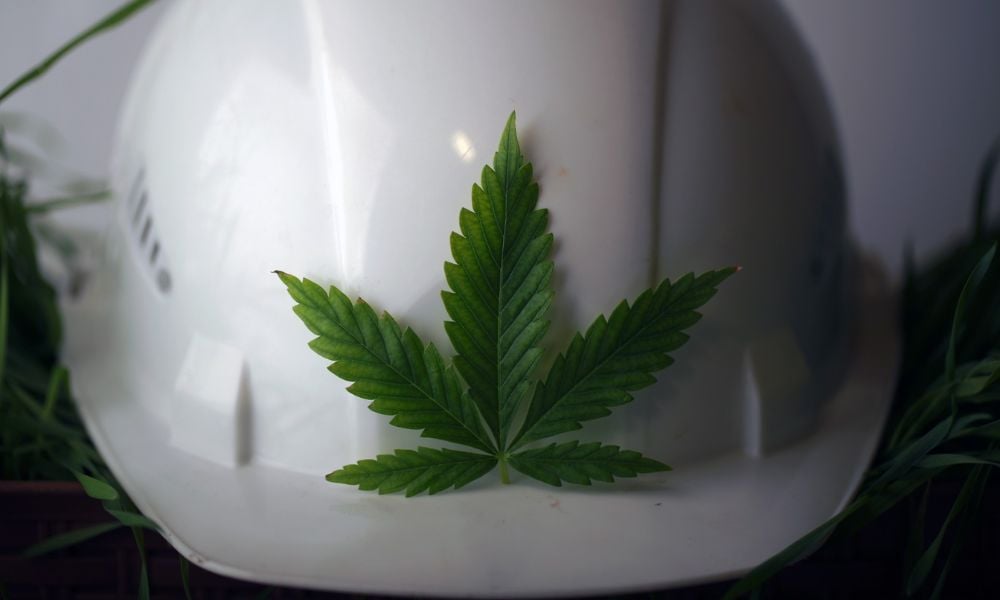More than five years after cannabis was made legal, employers still grappling with managing it in the workplace

This article was provided by DriverCheck Inc.
More than five years have passed since cannabis legalization in Canada, yet employers are still grappling with managing this now-legal substance in the workplace. In many safety-sensitive workplaces across the country, testing for tetrahydrocannabinol (THC) remains standard practice. Despite legalization, the risks associated with cannabis impairment have not disappeared; in fact, not only does there appear to be high rates of cannabis use amount Canadian adults, but studies also indicate that there continues to be the use of cannabis hours before or during work, escalating the risk of impairment and safety concerns.[1] [2]
How to manage positive THC drug tests in the workplace
Although cannabis and alcohol differ significantly, both are legal substances in Canada and can lead to impairment, particularly for those in safety-sensitive workplaces or positions. Following legalization, one of the foremost challenges for many employers remains the management of positive drug tests for THC. Below are considerations and insights to aid employers in navigating positive drug tests for legal substances.
- Ensure that your policy, employee education, and training clearly outline the expectations for substance use, encompassing the two legal substances, alcohol and cannabis.
- Companies should understand the difference between acute intoxication and impairment from cannabis use. Equipped with this knowledge, decisions can be made regarding the balance between permitting individuals to use a legal substance outside of work, and maintaining workplace safety.
- Different industries and companies may have varying risk tolerance levels, leading to differences in the timeframe for abstaining from cannabis use.
- Employee education is paramount. Ensuring employees have a deep understanding of the risks of cannabis use, despite its acceptance and legal status is imperative to reducing risks in the workplace.
- Understand the tests you are ordering and what the results can tell you.
- There are options for drug testing for THC, including urine and oral fluid testing each providing different information with a positive result. It is essential that companies conducting drug testing use a method that answers their specific questions, such as whether the individual used cannabis on the day of the test, or in the 24 hours prior to the test.
- Urine tests are for the inactive metabolite which can stay positive for days to weeks after the use of cannabis depending on several factors.
- Oral fluid testing detects the presence of active THC left in the oral cavity after smoking, vaporizing or ingesting cannabis. Results indicate recent use of cannabis (within hours of the collection depending on the cut-off level utilized).
- The quantitative levels of certain testing methods can offer a more precise timeframe of cannabis use, potentially influencing the determination of impairment risk.
- Consider the implications of fitness for duty on the day of the test.
- Testing is often conducted after an incident (post-incident testing) or upon suspicion of substance use (reasonable cause testing). However, there may be a delay between the indication for a test and the testing collection. Understanding potential risks at the start of the shift and at the time of the incident is equally important as the quantitative levels and risks at the time of collection, although this may only be feasible with certain testing methods.
- After a positive drug test, it is important to consider assessing employees for a substance use disorder.
- There are professionals who can assess employees to ensure they are not suffering from a substance use disorder, which would require treatment.
- Some individuals may not seek help for an underlying substance use disorder unless required to be assessed after a positive workplace drug test.
- Those diagnosed with a substance use disorder require treatment to address their medical condition, which is a crucial component of a workplace alcohol and drug testing program. Addressing their condition can have a positive impact on the employee's future health and wellness.
- The implications of a positive drug test for THC depend on all the aforementioned factors.
- Utilizing information from the policy, interpreting the results of the drug test, considering the timeframe of the test in relation to the start of the shift and the time of the indication for the drug test, and determining if an employee requires help with a substance use disorder can collectively determine the next steps.
Want more information on positive drug tests in the workplace?
While every case presents unique challenges, the aforementioned considerations serve to break down the necessary steps and factors required to effectively manage a positive drug test.
Join Dr. Melissa Snider-Adler as she delves into this topic at DriverCheck’s 7th annual Fitness For Duty Summit, taking place Oct 22nd & 23rd, in Calgary, Alberta. Secure your tickets here or reach out to DriverCheck for further help and guidance regarding cannabis in the workplace and other occupational health concerns.
[1] Carnide, N., Lee, H., Frone, M. R., Furlan, A. D., & Smith, P. M. (2021). Patterns and correlates of workplace and non-workplace cannabis use among Canadian workers before the legalization of non-medical cannabis. Drug and alcohol dependence, 218, 108386. https://doi.org/10.1016/j.drugalcdep.2020.108386
[2] https://publications.gc.ca/collections/collection_2024/sc-hc/H21-312-2023-2-eng.pdf





